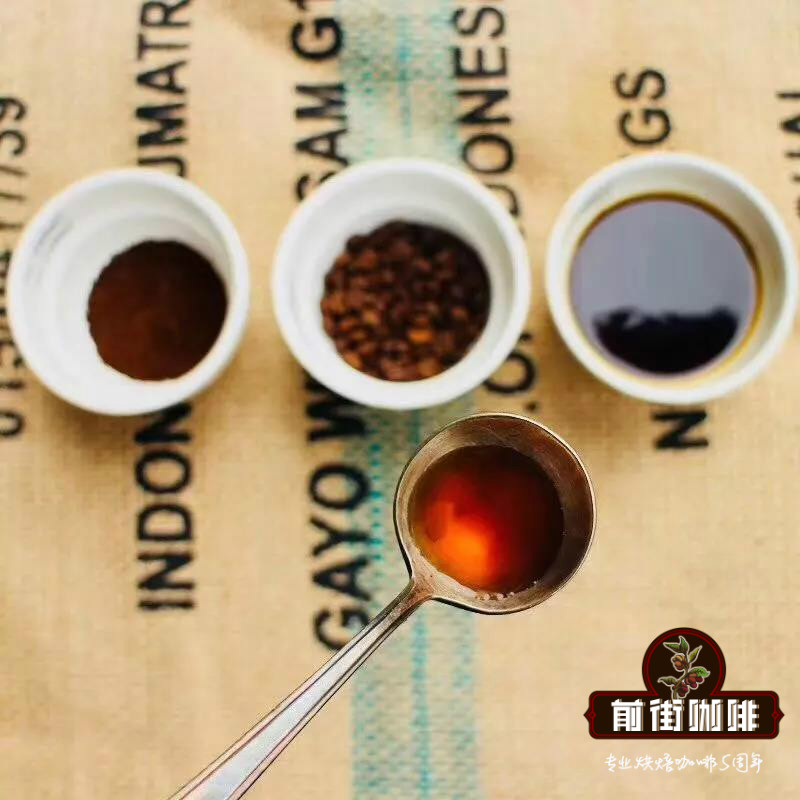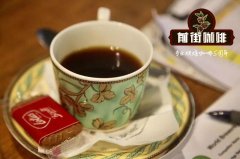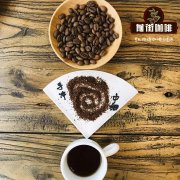The relationship between Burmese Blue Mountain Coffee Manor and Blue Mountain Coffee? What is S795 coffee?

Professional coffee knowledge exchange more coffee bean information please follow the coffee workshop (Wechat official account cafe_style)
The Blue Mountain Coffee Manor is located on a scenic steep slope of 1200-1400 meters above sea level, with an aerial view of the town of Wulun (Pyin Oo Lwin). The surrounding beautiful scenery is as famous as the award-winning gourmet coffee of the same name. Its coffee beans are mixed beans of three varieties: SL-34 bourbon from Kenya, natural hybrid S795 from India and Lanshan with low yield. S795, which originated in India, is a hybrid of S228 (a natural hybrid of Arabica and Liberka in nature) and Kent Kent (a Tibica hybrid found in India). It is best known for its cup balance and slightly emitted mocha aroma. SL-34 originates from Kenya in Africa, while Blue Mountain is a unique variety of Typica. It is of excellent quality, rich in lemon and flower aromas, and has a sweet finish.
The park is full of silver oaks and Hawaiian fruit trees that provide shade for coffee trees, adding to the different amorous feelings of the coffee farm. These intertwined plants are scattered all over the garden, bringing a unique charm to the original simple coffee growing environment. From a functional point of view, the fallen leaves of these trees can also provide important micronutrients for the soil. they can also be said to be natural fertilizers for coffee trees and block strong winds.
The harvesting team of Blue Mountain will not harvest the cherries by hand until the cherries become more ripe crimson, making the coffee taste rich and changeable. Its flavor has dark chocolate and clove aromas.
The country
Burma
Region
Mandalay (Mandalay)
Variety
SL-34, S795 and Blue Mountain
Process
Water washing
Altitude
1200-1400 m
Source
Direct trade
S795 (also known as Jember), this bean species is Jember Coffee Reseach Center spread to the island, so the local people call Smur795 this name, iron mutant Kent (Kent) and Smur288 cross, has a strong resistance to leaf rust, sweet.
Blue Mountain Coffee
Blue Mountain Coffee is a coffee bean brand grown in a limited area of the Blue Mountain Mountains of Jamaica at an altitude of 800-1200 meters. It usually grows on steep slopes, sometimes as high as 60 degrees and requires manual mining. It is characterized by its high aroma and delicate taste. Because of its high aroma, it is often mixed with other raw beans and more than 80% of it is exported to Japan.
Output is scarce
Because it is only planted in limited areas, the harvest is very low. The output of raw beans in 2014 was about 875 metric tons. From July 2013 to July 2014, the amount of raw beans exported by Jamaica to Japan was 283 tons, plus 440 metric tons. The total is 723 tons. After baking, 578 tons of ripe beans will be produced. Taking 15 grams as a cup, about 38.56 million cups, the average person in Japan drinks less than one cup of Blue Mountain coffee in a year. In fact, Blue Mountain coffee beans are the same as other coffee beans grown in Jamaica, but because they are cultivated in a harsh environment and screened through strict inspection, they produce a very meticulous taste. In 1953, the Jamaican government drew a clear line between the Blue Mountains and other areas in accordance with the law, stipulating that the name of Blue Mountain Coffee should not be used for coffee in areas other than the Blue Mountains. Only coffee made in selected areas of the Blue Mountains can be called "Blue Mountain Coffee".
The origin of the barrel:
Of all the coffee, only Blue Mountain is barreled, and other coffee exits are in sacks. It is said that from the mid-18th century, flour shipped from England to Jamaica during the British colonial period was recycled in empty buckets and used to transport coffee and rum. The buckets used today are all wood from temperate forests in the United States. the advantage of buckets is to absorb and release internal and external humidity without much change, which can alleviate sudden temperature changes in the process of transportation. Another barrel sealed off coffee aroma, can maintain the best coffee quality, but the additional cost will be higher.
Brand marketing strategy
In 1936, more than 80% of Jamaican Blue Mountain coffee was sold to Japan, and Japanese trading houses used the slogan "British Royal use" as an advertising slogan. Jamaica was a British territory at that time, and it was taken for granted by the Japanese public that Jamaican coffee was also drunk by the "British royal family". In fact, it was groundless. However, because the publicity activities in Japan are very large and sell very well, this myth has been handed down in Japan so far.
Originally in the "Blue Mountain Mountains" 800-1200 meters away from a specific area, using the name "Blue Mountain" is not allowed. However, the domestic sales volume of Blue Mountain imported into Japan is three times that of normal imports. Many of the coffee is grown at an altitude of 800 meters or less, but it is often named Blue Mountain. Even so, the price of raw coffee beans is between 4000 yen and 5000 yen per kilogram (the market price in 2013), which is very expensive. There are only a few cafes in Japan that put some blue mountain coffee beans to meet their customers.
Important Notice :
前街咖啡 FrontStreet Coffee has moved to new addredd:
FrontStreet Coffee Address: 315,Donghua East Road,GuangZhou
Tel:020 38364473
- Prev

El Santa Elena Coffee Farm introduces the characteristics of El Salvador Sun Pacamara Flavor
Professional coffee knowledge exchange more coffee bean information please pay attention to the coffee workshop (Wechat official account cafe_style) El Salvador Finka San Elena El Salvador is a small country, but it has dozens of volcanoes, it is the country with the highest volcanic density in the world, so it is called the country of volcanoes. The average elevation of the whole country is relatively high, and this geographical environment is very conducive to the growth of coffee.
- Next

What is the best Blue Mountain Coffee? Introduction of Jamaica Blue Mountain Gold Cup Coffee Brand
Professional coffee knowledge exchange more coffee bean information please follow the coffee workshop (Wechat official account cafe_style) the world-famous Blue Mountain Coffee, produced in the Blue Mountains of Jamaica. The Blue Mountains are located in the eastern part of the island of Jamaica. The mountain has such a beautiful name because a British soldier came to the island of Jamaica and saw the peak shrouded in blue light.
Related
- Detailed explanation of Jadeite planting Land in Panamanian Jadeite Manor introduction to the grading system of Jadeite competitive bidding, Red bid, Green bid and Rose Summer
- Story of Coffee planting in Brenka region of Costa Rica Stonehenge Manor anaerobic heavy honey treatment of flavor mouth
- What's on the barrel of Blue Mountain Coffee beans?
- Can American coffee also pull flowers? How to use hot American style to pull out a good-looking pattern?
- Can you make a cold extract with coffee beans? What is the right proportion for cold-extracted coffee formula?
- Indonesian PWN Gold Mandrine Coffee Origin Features Flavor How to Chong? Mandolin coffee is American.
- A brief introduction to the flavor characteristics of Brazilian yellow bourbon coffee beans
- What is the effect of different water quality on the flavor of cold-extracted coffee? What kind of water is best for brewing coffee?
- Why do you think of Rose Summer whenever you mention Panamanian coffee?
- Introduction to the characteristics of authentic blue mountain coffee bean producing areas? What is the CIB Coffee Authority in Jamaica?

